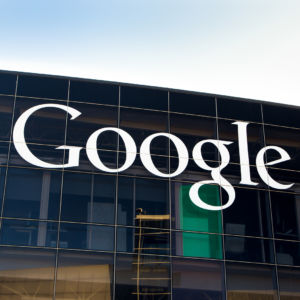The Federal Communications Commission gave Alphabet, Google’s parent company, an experimental license over the weekend to deploy a telecommunications network of balloons, dubbed Project Loon, over Puerto Rico to provide much-needed cell service to the island damaged by Hurricane Maria.
Originating from Google’s experimental division formerly known as Google X (before the search giant broke up into subsidiaries now under parent company Alphabet Inc.), Project Loon will deploy 30 balloons over Puerto Rico and the U.S. Virgin Islands for up to six months.
“More than two weeks after Hurricane Maria struck, millions of Puerto Ricans are still without access to much-needed communications services,” FCC Chairman Ajit Pai said Saturday. “That’s why we need to take innovative approaches to help restore connectivity on the island. Project Loon is one such approach.”
Pai said Project Loon “could help provide the people of Puerto Rico with access to cellular service to connect with loved ones and access life-saving information.”
“I’m glad the FCC was able to grant this experimental license with dispatch and I urge wireless carriers to cooperate with Project Loon to maximize this effort’s chances of success,” he added.
The FCC reported Sunday more than 80 percent of Puerto Rico’s cell sites are out of service, and in 72 of the island’s 78 counties more than than 75 percent of cell sites are out of service. Of the total 78 counties, 22 have lost 100 percent of service. In the U.S. Virgin Islands 57 percent of cell sites are out of service, and all cell sites in St. John are still out of service.
Alphabet’s application for Project Loon deployment in Puerto Rico included letters from eight wireless carriers providing service on the island to let Project Loon use their frequencies. The balloons will fly some 12 miles above the islands, with each providing coverage over more than 3,000 square miles. They’ll connect to Alphabet cell sites on the ground, and from there to Puerto Ricans’ handsets.
“We’re grateful for the support of the FCC and the Puerto Rican authorities as we work hard to see if it’s possible to use Loon balloons to bring emergency connectivity to the island during this time of need,” Libby Leahy, a spokesperson for Alphabet’s Moonshot Factory (the new name for Google X) said in a statement.
Leahy added Project Loon will need to partner with a telecommunications provider’s network in order to get cell service up and running.
“The balloons can’t do it alone,” Leahy said, adding the company’s making progress on that next step.
Project Loon can launch a new balloon every 30 minutes, with one previously surviving 190 days aloft in the stratosphere.
“We have demonstrated data transmission between balloons over 100 km apart in the stratosphere and back down to people on the ground with connection speeds of up to 10 Mbps, directly to their LTE phones,” the Project Loon website reads.
Alphabet isn’t the only Silicon Valley giant filling in the gap left by Puerto Rico’s hurricane-ravaged infrastructure. Facebook CEO Mark Zuckerberg announced in late September the social media giant would send a “connectivity team” to help restore communications on the island. Tesla CEO Elon Musk and Puerto Rico Gov. Ricardo Rosselló agreed on Twitter last week to talk about using Tesla’s solar-charged batteries to restore power on the island.
Clarification: Some language has been updated from the original version to clarify the relationship between Google, Alphabet, and Project Loon.

